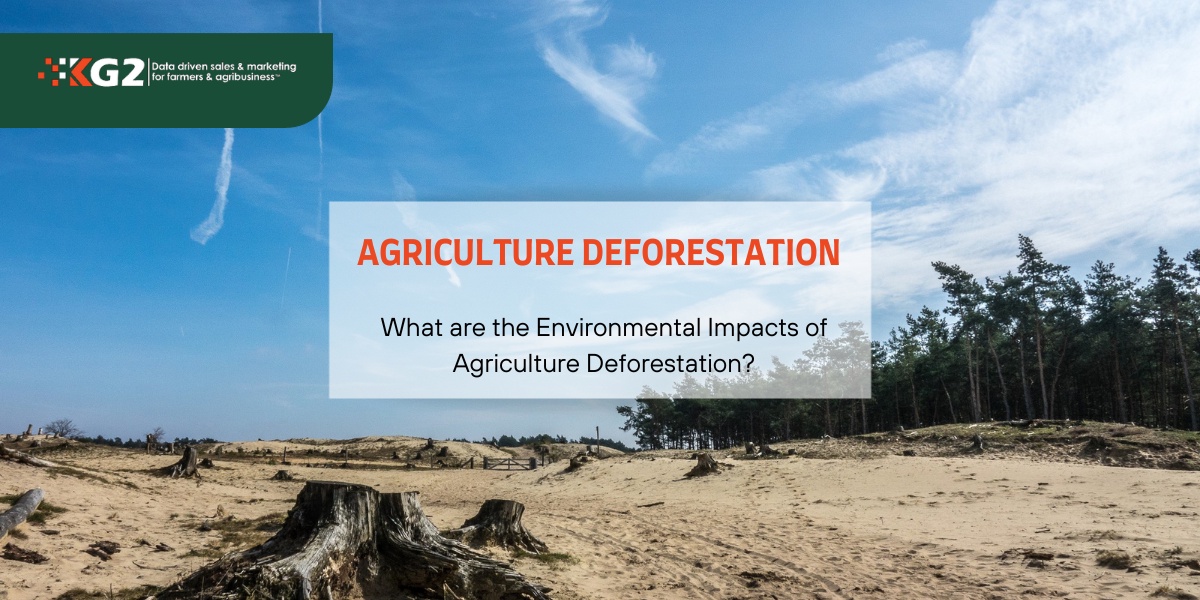Deforestation has become a critical environmental concern worldwide, with various sectors contributing to the loss of precious forests. One significant contributor to this issue is agriculture, specifically agriculture deforestation. In this article, we will delve into the environmental impacts of agriculture deforestation, exploring the consequences, examples, and potential solutions to mitigate this urgent problem.
Understanding Agriculture Deforestation
Agriculture Deforestation Defined
Agriculture deforestation refers to the clearing of forests for the expansion of agricultural activities. This often involves the removal of large tracts of land covered with trees to make way for crops, livestock, or other agricultural purposes. While agriculture is essential for sustaining human life, the methods employed to create space for farming can have severe consequences for the environment.
Environmental Impacts of Agriculture Deforestation
Loss of Biodiversity
One of the most significant consequences of agriculture deforestation is the loss of biodiversity. Forests are home to countless plant and animal species, many of which are unique and often endangered. The clearing of these forests disrupts ecosystems, leading to the decline or extinction of various species that depend on the forest habitat.
Disruption of Carbon Balance
Forests play a crucial role in maintaining the balance of carbon dioxide in the atmosphere. Trees absorb carbon dioxide during photosynthesis and release oxygen, acting as a natural carbon sink. When forests are cleared, this balance is disrupted, contributing to the increase in greenhouse gases in the atmosphere and exacerbating climate change.
Soil Erosion and Degradation
The removal of trees from a forested area leaves the soil exposed and vulnerable to erosion. Tree roots help bind the soil together, preventing erosion and maintaining soil fertility. Agriculture deforestation leads to increased soil erosion, compromising the quality of the soil and making it less suitable for farming in the long run.
Impact on Water Resources
Forests play a crucial role in regulating water cycles. They help in maintaining groundwater levels, reducing the risk of floods, and ensuring a steady flow of rivers and streams. Agriculture deforestation disrupts these natural processes, leading to altered water patterns, decreased water quality, and increased susceptibility to droughts and floods.
Examples of Agriculture Deforestation Issues
Amazon Rainforest
The Amazon rainforest, often referred to as the "lungs of the Earth," has been severely affected by agriculture deforestation. Large portions of the Amazon have been cleared for cattle ranching, soy cultivation, and other agricultural activities, leading to a loss of biodiversity and contributing to climate change.
Southeast Asia Palm Oil Plantations
Countries in Southeast Asia, such as Indonesia and Malaysia, have witnessed extensive deforestation for the establishment of palm oil plantations. This has led to habitat destruction, loss of biodiversity, and significant environmental degradation in these regions.
Solutions to Remedy Agriculture Deforestation
Sustainable Agriculture Practices
Implementing sustainable agriculture practices is crucial for addressing agriculture deforestation. This includes agroforestry, which integrates trees into agricultural landscapes, and adopting farming methods that prioritize conservation and biodiversity.
Reforestation Initiatives
To counter the negative effects of agriculture deforestation, robust reforestation initiatives are essential. Planting native trees in cleared areas helps restore ecosystems, enhances biodiversity, and mitigates the impact on climate change.
Policy and Regulation
Governments and international bodies must implement and enforce policies that regulate land use and promote sustainable practices. This includes strict regulations against illegal logging and deforestation, as well as incentives for farmers to adopt environmentally friendly agricultural methods.
Conclusion
Agriculture deforestation poses severe environmental challenges, impacting biodiversity, carbon balance, soil health, and water resources. Recognizing the urgency of this issue is essential for implementing effective solutions. Through sustainable agriculture practices, reforestation initiatives, and strong policies, we can work towards a harmonious coexistence between agriculture and the preservation of our precious forests. It is a collective responsibility to address agriculture deforestation and safeguard the health of our planet for current and future generations.


No comments yet